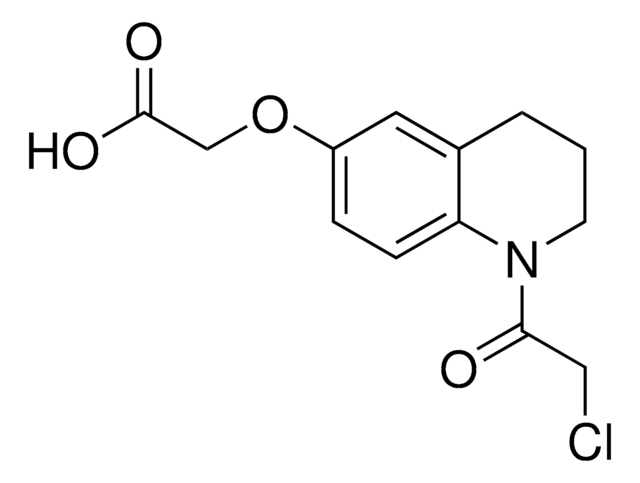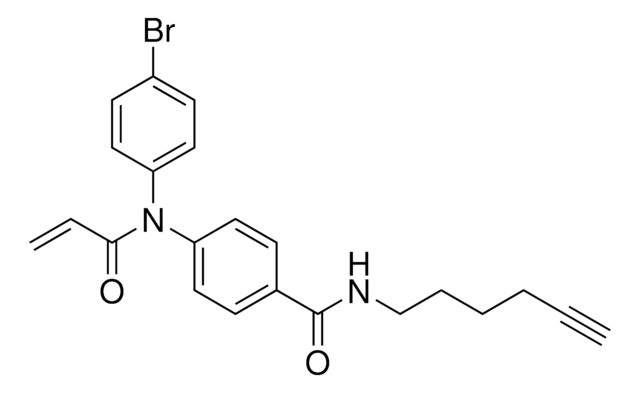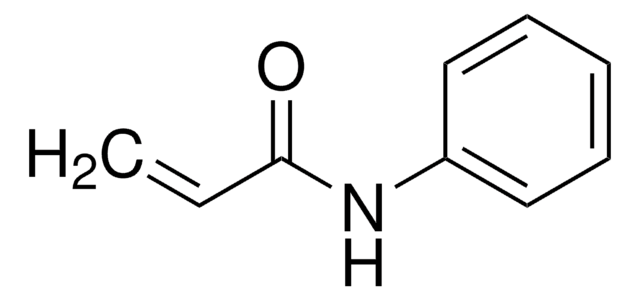Wichtige Dokumente
911798
N-(4-Bromophenyl)-N-phenylacrylamide
≥95%
Synonym(e):
Electrophilic scout fragment, KB05, Scout fragment for targetable cysteine
Größe auswählen
About This Item
Empfohlene Produkte
Qualitätsniveau
Assay
≥95%
Form
(Powder or crystals or solid or chunks)
Lagertemp.
2-8°C
SMILES String
Brc1ccc(cc1)N(c2ccccc2)C(=O)C=C
InChI
1S/C15H12BrNO/c1-2-15(18)17(13-6-4-3-5-7-13)14-10-8-12(16)9-11-14/h2-11H,1H2
InChIKey
WFQQVUPOAKOTGT-UHFFFAOYSA-N
Verwandte Kategorien
Anwendung
Sonstige Hinweise
Rechtliche Hinweise
Ähnliches Produkt
Lagerklassenschlüssel
11 - Combustible Solids
WGK
WGK 3
Hier finden Sie alle aktuellen Versionen:
Analysenzertifikate (COA)
Die passende Version wird nicht angezeigt?
Wenn Sie eine bestimmte Version benötigen, können Sie anhand der Lot- oder Chargennummer nach einem spezifischen Zertifikat suchen.
Besitzen Sie dieses Produkt bereits?
In der Dokumentenbibliothek finden Sie die Dokumentation zu den Produkten, die Sie kürzlich erworben haben.
Active Filters
Unser Team von Wissenschaftlern verfügt über Erfahrung in allen Forschungsbereichen einschließlich Life Science, Materialwissenschaften, chemischer Synthese, Chromatographie, Analytik und vielen mehr..
Setzen Sie sich mit dem technischen Dienst in Verbindung.








